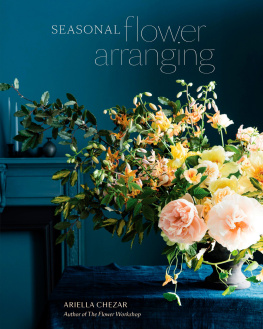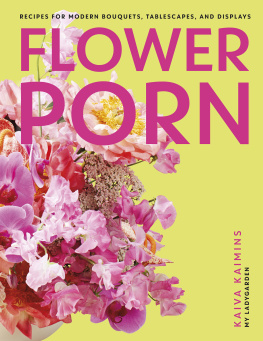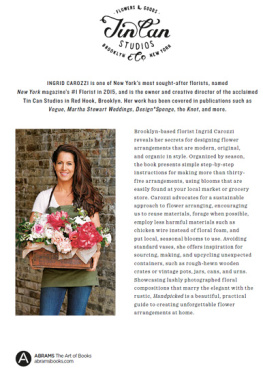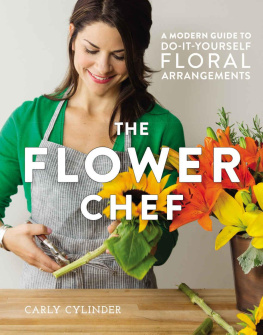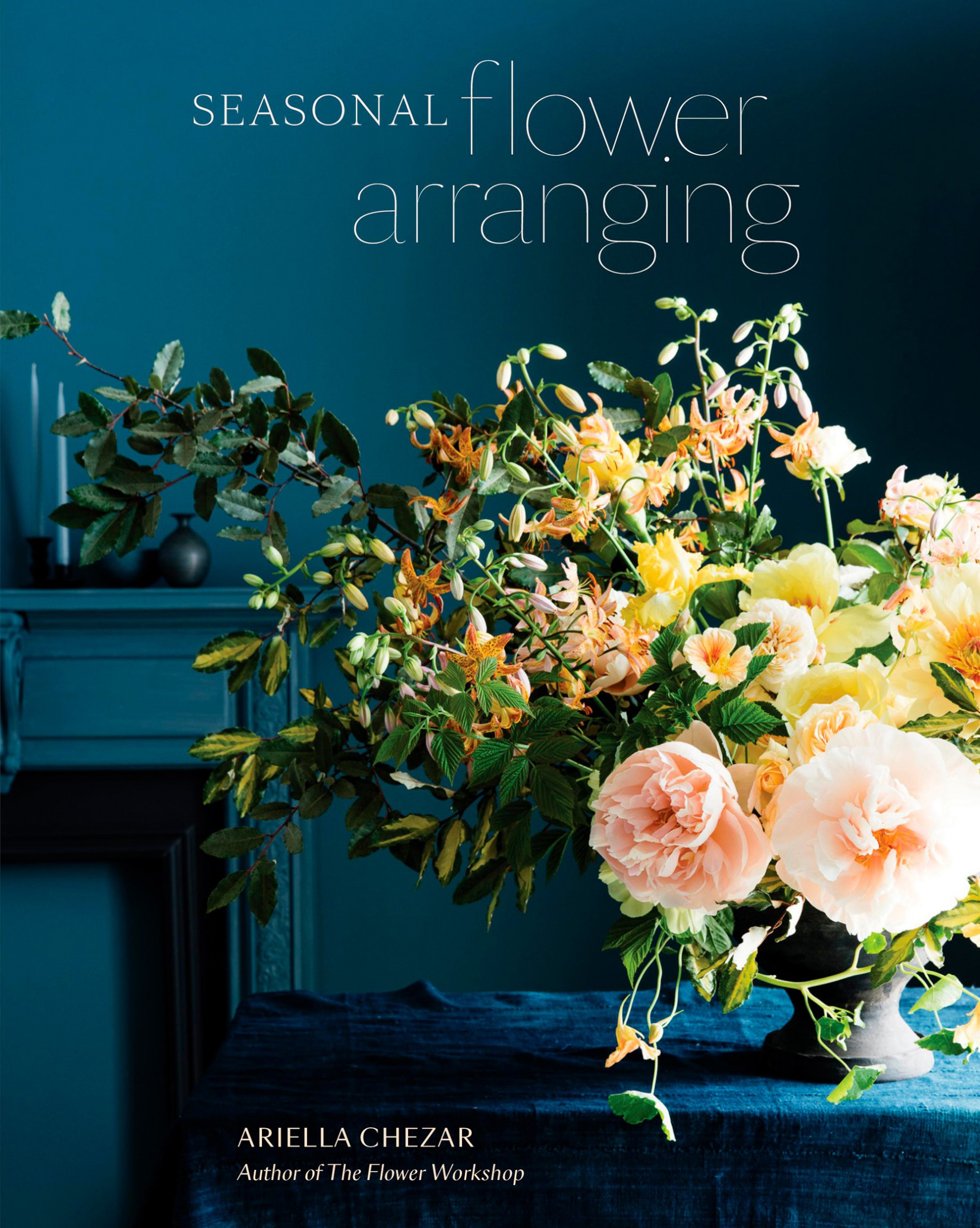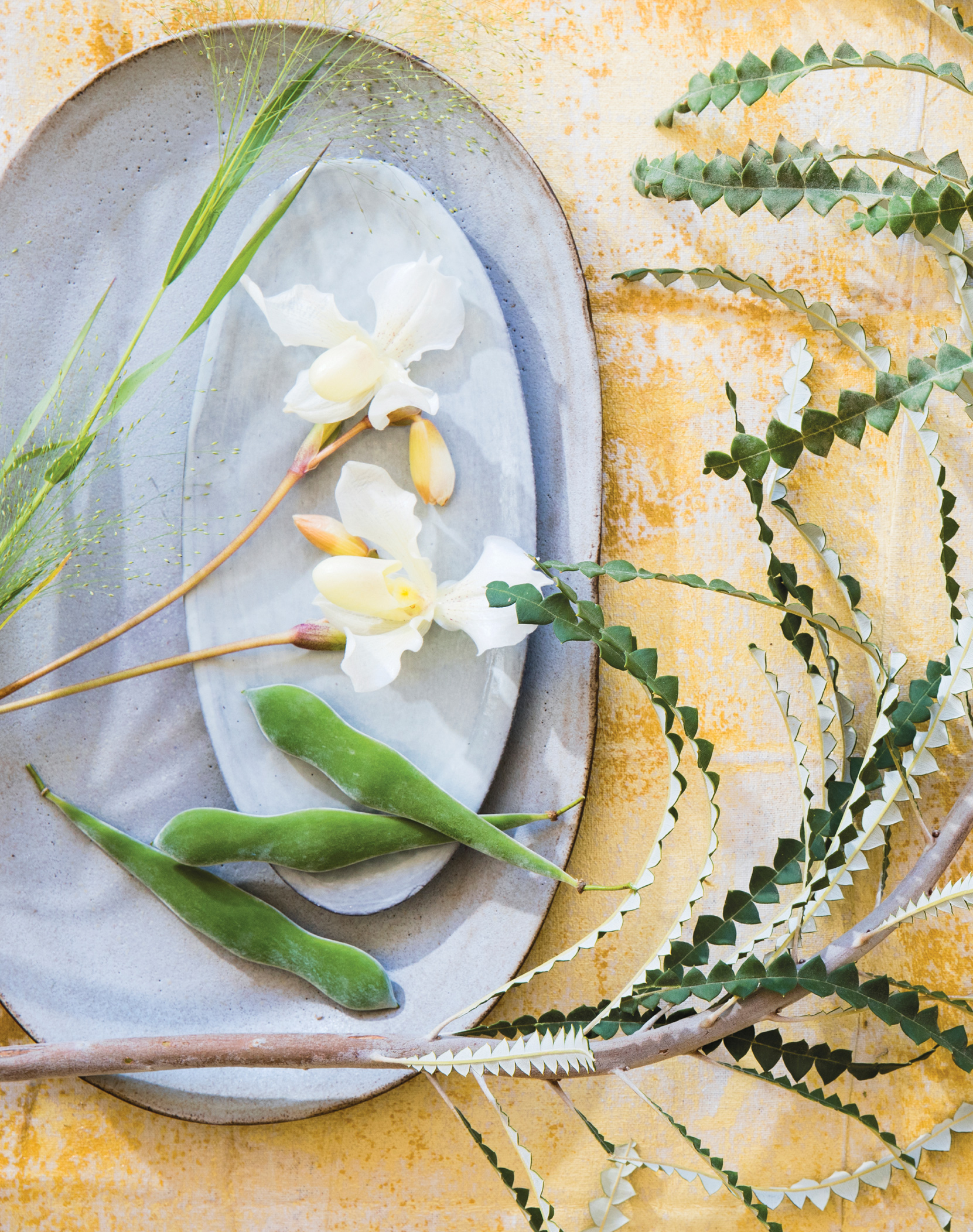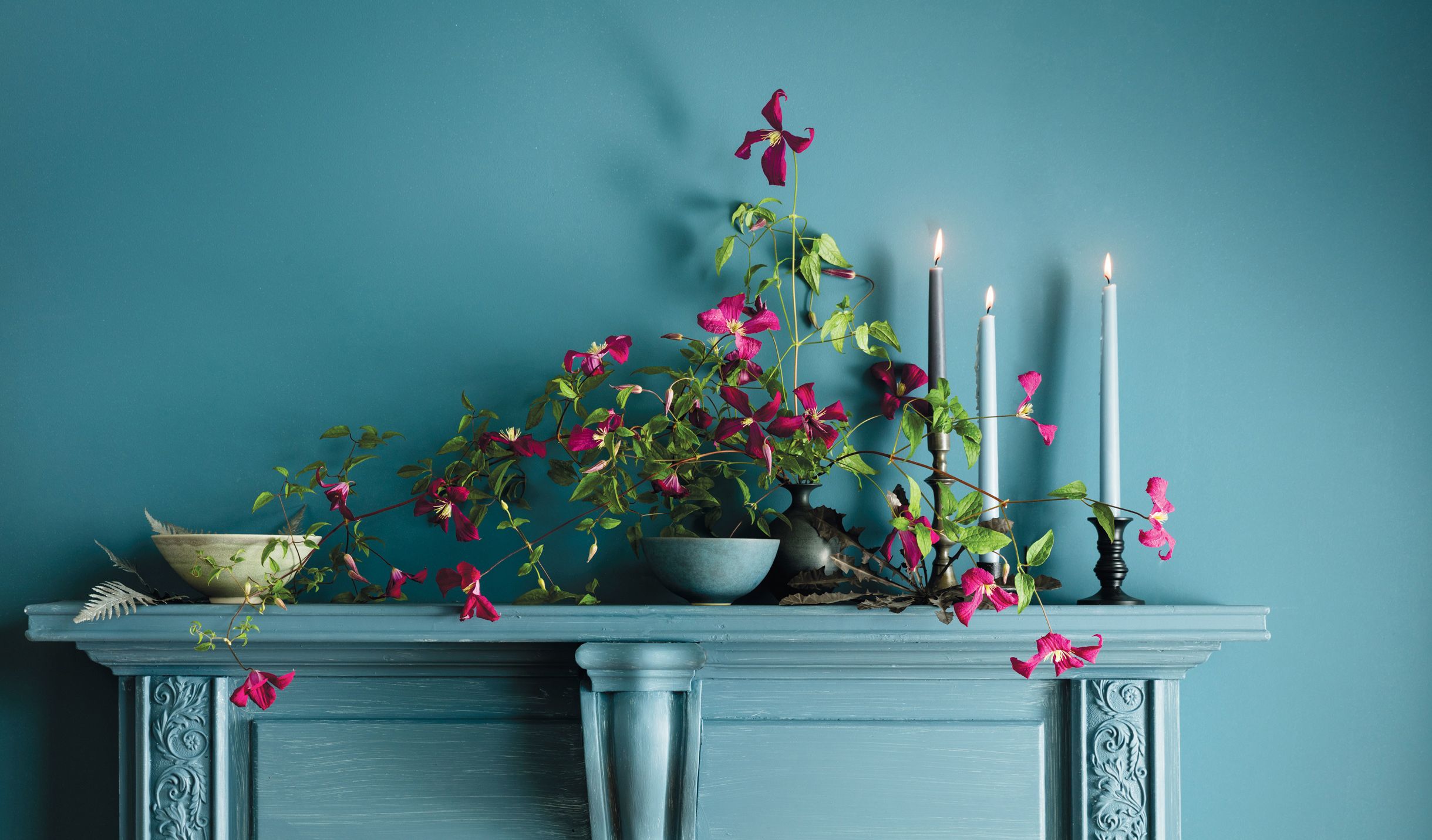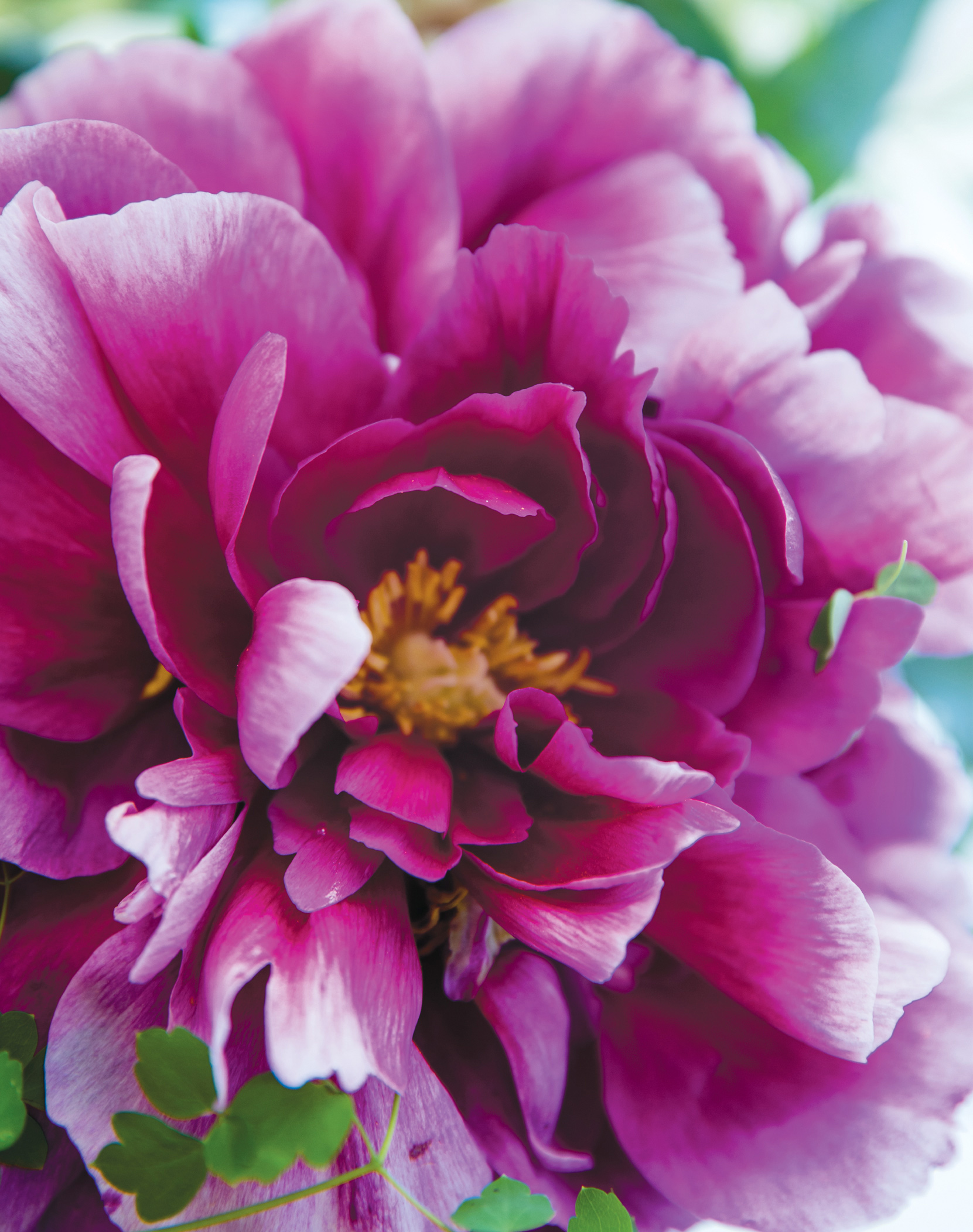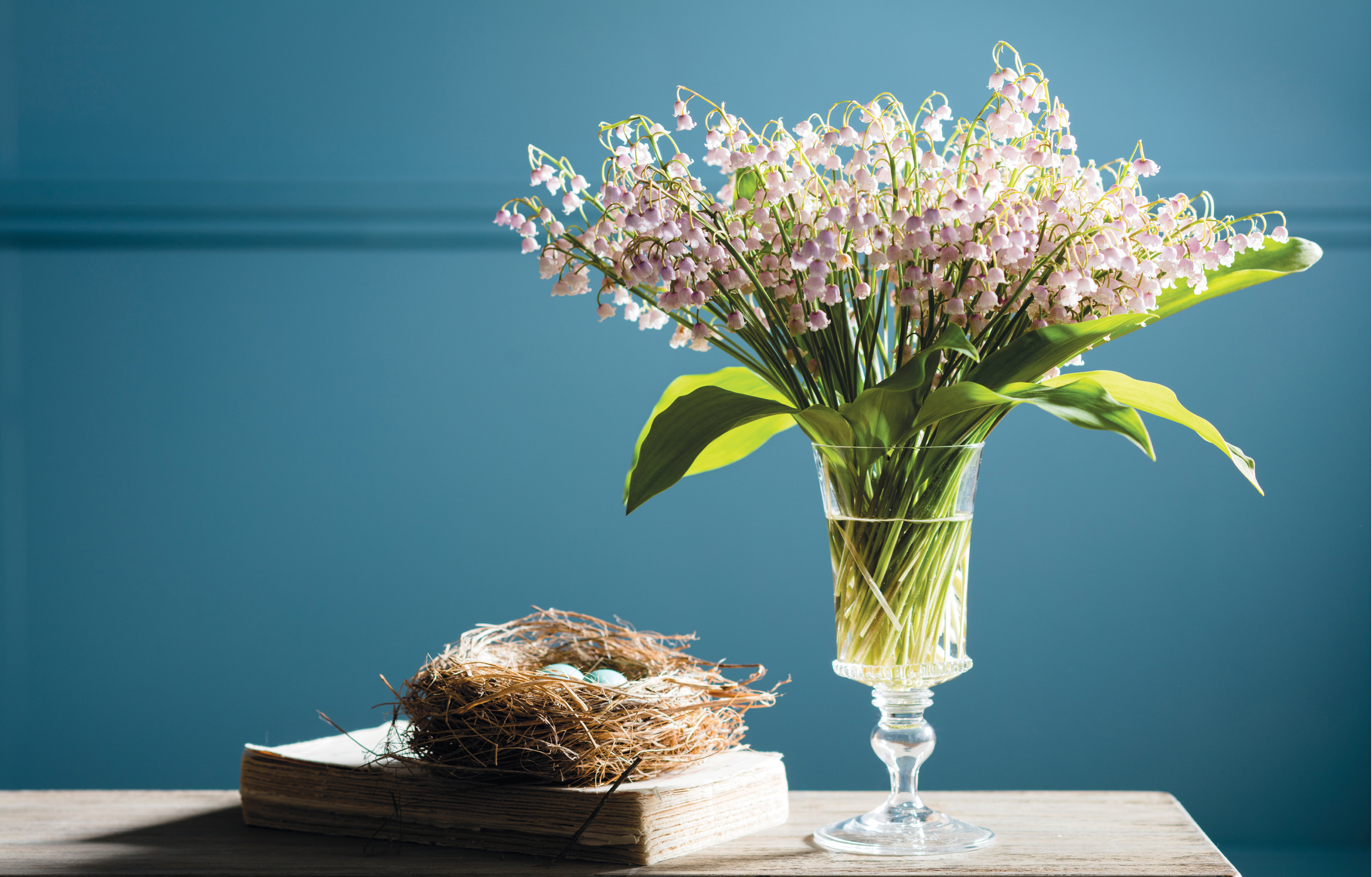Copyright 2019 by Ariella Chezar
Photographs copyright 2019 by Erin Kunkel
All rights reserved.
Published in the United States by Ten Speed Press, an imprint of the Crown Publishing Group, a division of Penguin Random House LLC, New York
www.crownpublishing.com
www.tenspeed.com
Ten Speed Press and the Ten Speed Press colophon are registered trademarks of Penguin Random House LLC.
Library of Congress Cataloging-in-Publication Data
Names: Chezar, Ariella, author.
Title: Seasonal flower arranging : fill your home with blooms, branches, and foraged materials all year round / Ariella Chezar with Julie Michaels ; photography by Erin Kunkel.
Description: California : Ten Speed Press, [2019] | Includes index.
Identifiers: LCCN 2018023747
Subjects: LCSH: Flower gardeningSeasonal variations.
Classification: LCC SB407 .C453 2019 | DDC 635.9/676dc23
LC record available at https://lccn.loc.gov/2018023747
ISBN9780399580765
Ebook ISBN9780399580772
Prop styling by Glenn Jenkins
v5.3.2
prh
contents
I AM A CHILD OF NEW ENGLAND and, as such, I am ever conscious of the seasons.
introduction
Those of us who have our roots in this rocky soil follow the calendar with hope and despair. Can winter really last so long? Will the apple blossoms be spared from a killing frost this year?
But then I go for a walk in the darkening woods, and my spirits brighten. I harvest long stems of witch hazel and evergreens, carrying them home by the armful. Once these are cheerfully displayed in a large vase on my sideboard, I might discover winterberriesgloriously naked upon the branchat the local farmers market. Amaryllis bulbs are brought up from the basement and coaxed into another season of bloom as I wait patiently for the days to grow longer.
Finally, spring arrivesand I rejoice. Is there anything braver than the hellebore, its purple-white flowers pushing up through desiccated leaves? Crocuses litter the lawn, while snowdrops blossom in white-capped colonies.
This consciousness of the changing seasonsand my love of each for its distinctive giftsis why I have chosen to arrange this book by following the calendar. Beginning with the simple gifts of spring, these pages illustrate arrangements, bouquets, and other creations that keep time with the waxing and waning of our year.
There is another reason to order this book by the seasons. It gives me an opportunity to harvest locally, to discover the wealth of blossoms that are raised on flower farms and in the backyard gardens of enthusiasts like me who celebrate the farm-to-flower movement.
I was raised by a mother whose early reading of Rachel Carsons Silent Spring schooled her in the dangers of pesticides and inspired her to plant her own garden. In my house, potatoes, peppers, and onions didnt come from the supermarket; they came from our backyardas did every tomato my mother ever canned.
It took another generation for those of us in the floral design business to apply the same standards we apply to the foods we eat to the flowers we use.
Just as fruits and vegetables taste best when they are harvested locally and consumed in season, flowers that are picked close to home reflect a true connection to time and place. The French call this terroir , signifying the relationship between the land and what it grows.
More to the point, locally grown is important in an energy-conscious world. There is no way that importing flowers from halfway around the globe helps anybodys energy footprint.
It is for these reasons that my husband, Chris, and I purchased ninety acres of land in Ghent, New York, just across the border from our home in western Massachusetts, and started Zonneveld Farm. In 2012, we erected a hoop house and planted bushels of tulip bulbs, then plowed an acre of land and seeded it with zinnias, cosmos, and other lush annuals. I still remember my first crop of purple checkerboard fritillarias, their heads dancing in the breeze. I felt like a proud mother with every blossom I picked.
As a native New Englander, I have always turned to the woods for inspiration. We may have cold winters, but the region also produces an abundance of flowering branches, whether its lilacs and apple blossoms in spring, or the rusty reds of viburnum and euonymus in fall.
Since branches and vines feature strongly in my work, I made sure we planted the farm with multiple varieties of any tree or shrub that offered a season of glory. My children and I harvest branches of dogwood, crabapple, and flowering quince in the spring. In fall, I use some of the same shrubs for their fruits, making these perennial plantings twice as valuable.
Whatever flowers and branches I dont use myself, I sell to my floral design colleagues in New York City, wholike meare devotees of the farm-to-vase movement.
When I teach my popular flower workshops around the country and abroad, I use as many blossoms as possible that are in season and local to the region. I dont want to see a tulip in August or a peony in September. I love them in their season but when that season passes, its time to move on.
That said, as a professional floral designer I do make compromises. Some of the best, most exciting blossoms still come from Holland, as do most of the bulbs we plant here in the United States. If Im providing the flowers for an early spring wedding, chances are Im combining imports with anything thats available locally.
Ultimately, we are limited by the temperate climate that covers much of the United States. With the exception of California, most of the country cant produce flowers all year round. Theres also the issue of cost. The sad truth is that 78 percent of the cut flowers sold in this country today are imported from Columbia. Another 15 percent come from Ecuador, Europe, and Mexico. Right now, we local growers are filling only a very small, though expanding, niche in the market.
This global market has its pluses and minuses. The negatives are clear to anyone with an environmentalists soul. But globalization has also made flowers less expensive and more available to the public. Chances are the bouquets you buy at your local supermarket were not only grown but assembled somewhere in South America.

